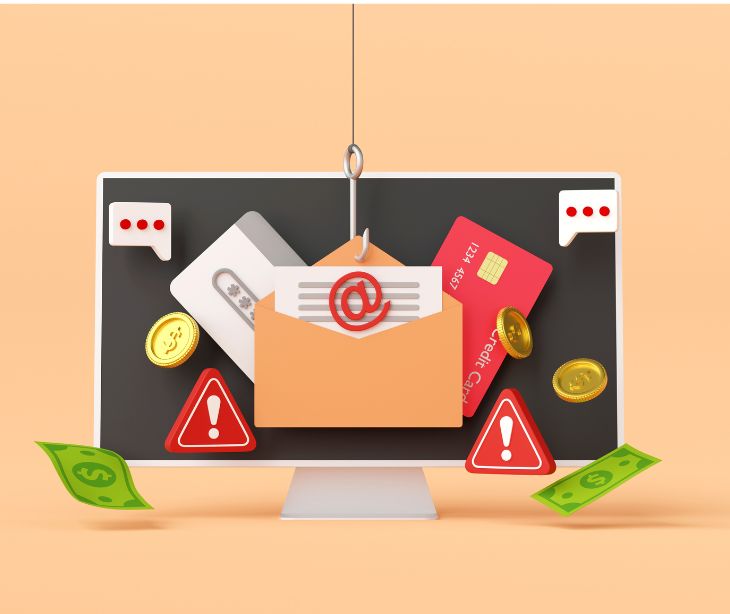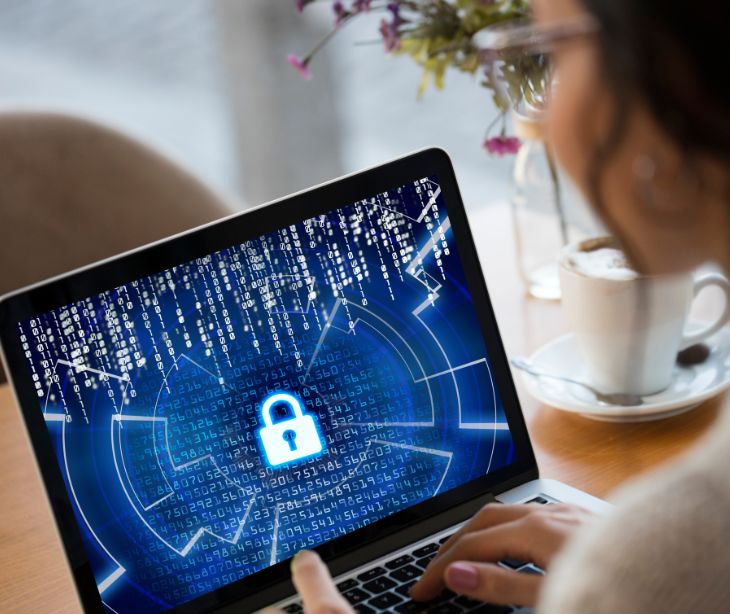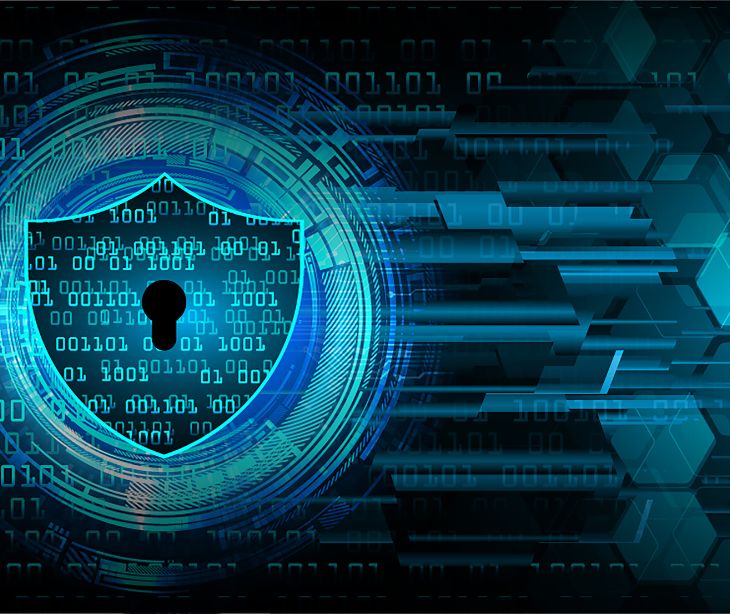
Phishing attacks have become increasingly sophisticated, making it necessary for individuals to know how to protect themselves from falling victim to these scams. We will provide tips to help you spot and avoid phishing attacks. By following these steps and taking precautions, you can safeguard your personal information and prevent cybercriminals from gaining unauthorized access to your accounts.
Understanding phishing attacks
Phishing attacks are malicious attempts to deceive individuals into sharing sensitive information or taking actions that compromise their security. These attacks typically involve fraudulent emails, text messages, phone calls, or websites that impersonate trusted entities or individuals. The goal is to trick users into providing personal data such as Social Security numbers, credit card information, login credentials, or downloading malware onto their devices.
The FBI's Internet Crime Complaint Center (IC3) revealed a troubling trend: phishing attacks have surged to become the most frequently reported cybercrime, tallying over 300,000 complaints. These nefarious schemes aren't just pervasive; they're also profoundly impactful. Research conducted jointly by the Ponemon Institute and Proofpoint paints a picture: the financial toll of phishing attacks has skyrocketed, quadrupling from 2015 to 2021. Astonishingly, the average cost of a successful phishing attack in 2021 reached a staggering $14.8 million.
The impact of phishing
The impact of phishing attacks can be severe, leading to identity theft, credit card fraud, ransomware attacks, data breaches, and significant financial losses for both individuals and organizations. These attacks exploit human error and rely on social engineering tactics to manipulate individuals into divulging information or taking actions that benefit cybercriminals. And they're effective; Americans lost $57 million to phishing attacks in 2019, and the risks and losses for businesses are even greater.
Related: What is an email phishing attack?
Recognize the signs of phishing
One of the first steps in protecting yourself against phishing attacks is to familiarize yourself with the common signs of a phishing attempt. While phishing emails may vary in appearance, there are several red flags to watch out for:
- Unfamiliar greeting or tone: Phishing emails often lack a personal touch and may use generic greetings like "Dear Customer" instead of addressing you by name.
- Unsolicited messages: Be cautious of emails or messages from unknown senders, especially if they ask for personal information or financial details.
- Grammar and spelling errors: Phishing emails often contain grammatical mistakes or misspelled words. Legitimate organizations typically have strict quality control measures in place for their communications.
- Sense of urgency: Phishing emails often create a sense of urgency to pressure you into taking immediate action. They may threaten consequences if you fail to respond or provide information promptly.
- Suspicious links or attachments: Be cautious of links or attachments in emails from unknown sources. Hover over links before clicking on them to check if the URL matches the official website.
- Requests for personal information: Legitimate organizations rarely ask for sensitive information like passwords, social security numbers, or credit card details via email.
- Inconsistencies in email addresses, links, etc.: Phishing emails may contain email addresses or URLs that mimic official ones but have slight variations or misspellings.
- Unusual requests: Be wary of requests to transfer money, make payments, or provide confidential information without a plausible explanation.
- Alerts that you've won something: Phishing emails may claim that you've won a prize or a lottery, enticing you to provide personal information to claim your winnings.
If you notice any of these signs in an email or message, proceed with caution and verify the legitimacy of the communication before taking any action.
Don't respond to a phishing email
If you receive a suspicious email, refrain from responding. Responding could inadvertently validate your email address to the sender, potentially increasing the frequency of phishing attempts. Instead, take proactive measures such as marking the email as spam or reporting it to your email provider. This is especially pertinent given the staggering figure of 1 billion emails exposed, impacting 1 in 5 internet users, showing the persistent prevalence of phishing attacks.
Avoid sharing personal information
Legitimate organizations typically have secure methods for collecting sensitive information and would not request such information via email. If you receive an email asking for personal information, be skeptical and verify the legitimacy of the request through official channels.
Use strong passwords
A strong password should be unique, complex, and difficult to guess. It should contain a combination of uppercase and lowercase letters, numbers, and special characters. Avoid using easily guessable information such as your name, birthdate, or common words. Use different passwords for each online account to minimize the risk of multiple accounts being compromised if one password is compromised.
Read more: 5 Steps to improve password security in healthcare
Keep your operating system up to date
Operating system updates often include important security patches that address vulnerabilities exploited by cybercriminals, including those involved in phishing attacks. Regularly check for updates and install them promptly to ensure you have the latest security enhancements.
Keep an eye on your financial statements
Review your bank statements, credit card statements, and other financial records for any unfamiliar charges or transactions. If you notice any suspicious activity, report it to your financial institution immediately. Prompt action can help prevent further damage to your accounts and financial well-being.
Never click on unknown links or attachments
Phishing emails often contain malicious links or attachments that, when clicked, can install malware or direct you to fake websites designed to steal your personal information. To protect yourself, avoid clicking on links or opening attachments in emails from unknown sources. Instead, verify the legitimacy of the email and its contents through official channels.
Only respond to known senders
Cybercriminals often send phishing emails from fake or impersonated email addresses to trick recipients into disclosing sensitive information. To protect yourself, only respond to emails from known senders or contacts you trust. If you receive an email from an unfamiliar sender requesting personal information, treat it with skepticism and verify the sender's identity through other means.
Stay informed
Regularly educate yourself about the current trends and types of phishing attacks to better recognize and avoid them. Many organizations provide resources and training on cybersecurity best practices, including how to identify and protect against phishing attacks. Stay proactive and seek out reliable sources of information to stay ahead of cyber threats.
Regularly back up your data
By creating regular backups of your important files and data, you can minimize the impact of a successful phishing attack or other forms of data loss. In the event of a security breach or ransomware attack, you can restore your data from a backup and avoid the loss of information.
Block pop-ups
Pop-ups can be a common method used by cybercriminals to deliver phishing attacks. To protect yourself, enable pop-up blockers in your web browser to prevent unwanted pop-ups from appearing. Most modern web browsers have built-in pop-up blockers, but it's always a good idea to double-check your browser settings to ensure they are enabled.
Use a firewall
Firewalls act as a barrier between your device and the internet, monitoring incoming and outgoing network traffic and blocking potentially malicious connections. Ensure that you have a firewall enabled on your device, whether it's the built-in firewall provided by your operating system or a third-party firewall application.
Read more: Choosing a firewall for a healthcare organization
Keep your browser up to date
Browser updates often include security patches that address vulnerabilities exploited by cybercriminals, including those involved in phishing attacks. Set your browser to automatically update or regularly check for updates to ensure you have the latest security enhancements and protection against phishing threats.
Use antivirus software
Antivirus software helps detect and block malicious software, such as keyloggers and trojans, that cybercriminals may use to steal your sensitive information. Make sure that your antivirus software is up to date, and perform regular scans to identify and remove any potential threats.
Read also: How do email phishing attacks impact HIPAA compliance?
What to do if you get a phishing email
Even with precautions in place, it's still possible to receive a phishing email. If you receive a suspicious email, follow these steps:
- Don't respond: Avoid responding to the email or clicking on any links or attachments.
- Don't open links or attachments: Opening links or attachments in a phishing email can put your device and personal information at risk.
- Report the email: Report the phishing email to your email provider to help prevent others from falling victim to the scam.
- Delete the message: Once you've taken the necessary steps, delete the phishing email to remove it from your inbox.
See also: HIPAA Compliant Email: The Definitive Guide
In the news
The use of a new phishing-as-a-service (PhaaS) platform called 'Tycoon 2FA' is gaining popularity among cybercriminals targeting Microsoft 365 and Gmail accounts in an attempt to bypass two-factor authentication (2FA) protection. Discovered by Sekoia analysts during routine threat hunting in October 2023, the PhaaS kit has been active since at least August of that year, when it was offered through private Telegram channels by the Saad Tycoon group.
A newer version of Tycoon, released in 2024, is said to be more surreptitious than its predecessor, indicating ongoing efforts toward improvement. This service currently uses over a thousand domains and has already been used over a thousand times for phishing attacks.
The discovery of the Tycoon 2FA phishing kit is another advance for cybercriminals. Using 2FA is widely accepted as an added layer of security, giving organizations confidence that their systems are protected from cyber threats. Cybercriminals are constantly advancing in their techniques for evading cybersecurity measures organizations implement to safeguard their data. The increasing popularity of the Tycoon 2FA phishing kit could mean 2FA is a false sense of security that is less effective than other safeguarding methods, leading organizations to rethink their security strategies.
Read more: Phishing kit that bypasses MFA targets Gmail and Microsoft 365
FAQs
What should I do if I suspect a phishing attempt?
Refrain from clicking on any links or providing personal information. Instead, the suspicious activity should be reported to the legitimate organization being impersonated.
How can I protect myself from phishing attacks?
Be cautious of unsolicited communications, verify the legitimacy of requests for personal information, and use security software to help identify potential threats.
What are some common examples of phishing attacks?
Examples include emails claiming to be from a bank requesting account details, fake websites mimicking legitimate login pages, and messages impersonating trusted companies requesting sensitive information.
What are the potential consequences of falling victim to a phishing attack?
Victims may experience identity theft, financial loss, unauthorized access to personal accounts, and compromised sensitive data.
Can businesses be targeted by phishing attacks?
Yes, businesses are often targeted through email scams to obtain sensitive company information or gain unauthorized access to corporate networks.
What should I do if I accidentally respond to a phishing email?
If you accidentally respond to a phishing email, report the message, change your account passwords, and inform your financial institution of the attack. Additionally, monitor your online accounts and banking statements closely for any unauthorized activity.
How can two-factor authentication (2FA) protect against phishing attacks?
Two-factor authentication adds an extra layer of security to your online accounts by requiring a second form of verification, such as a unique code sent to your mobile device. This makes it significantly more difficult for cybercriminals to gain unauthorized access to your accounts, even if they manage to obtain your password through a phishing attack.
Can phishing occur through other means besides email?
Yes, phishing can also occur through text messages, phone calls (vishing), or even through social media platforms. The same caution should be exercised across all communication channels.
How prevalent are phishing attacks?
Phishing attacks are unfortunately very common and continue to be a significant threat to individuals and organizations. Stay vigilant and updated on best practices for protection.
Subscribe to Paubox Weekly
Every Friday we'll bring you the most important news from Paubox. Our aim is to make you smarter, faster.




